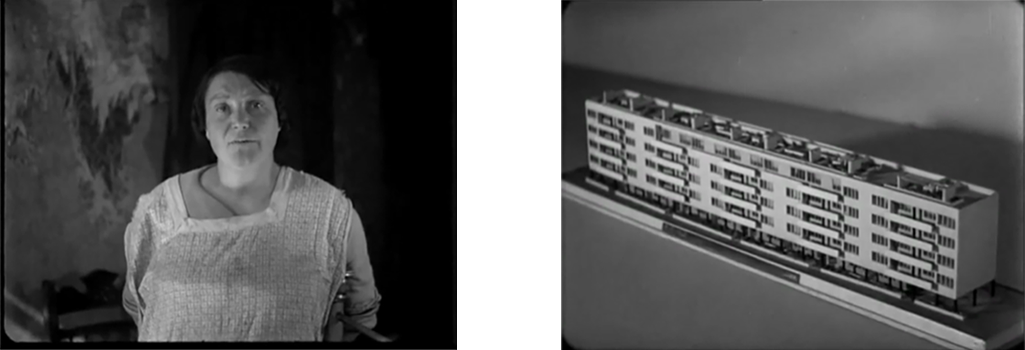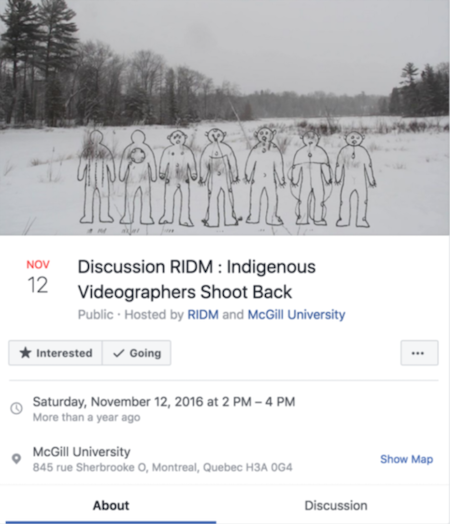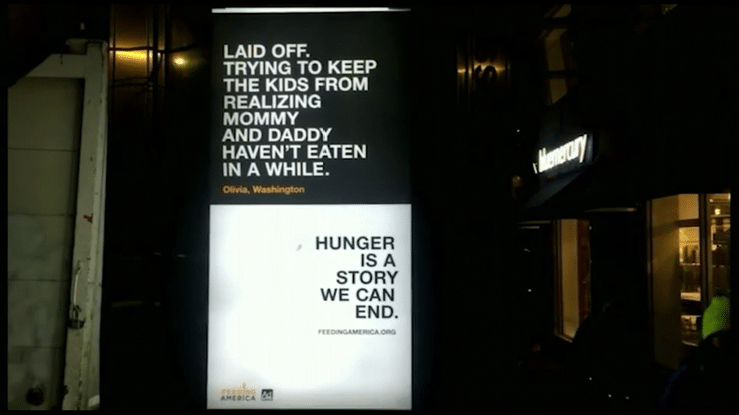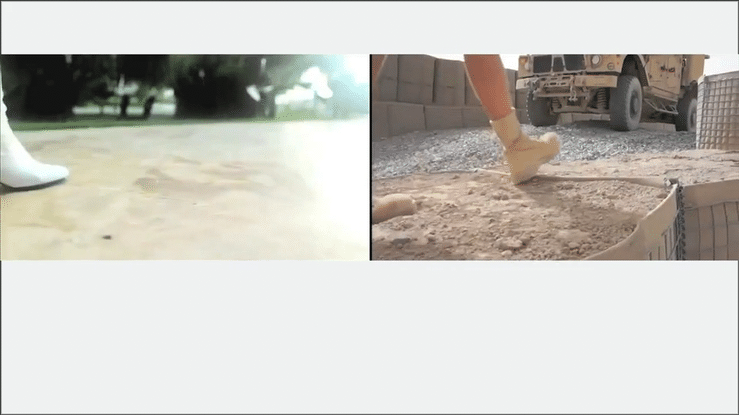Mass or mobile, social or micro, we have grown accustomed to specifying what media are by how widely they circulate, where they find us, and how many of us are presumed to be found there. We tend to be most comfortable using the language of form, even if it’s not recognized as such, when that language is calibrated in specifications of scale, finding terms to respond to new technologies and their expanded or contracted mobilities. The development of oil-based paint in fifteenth-century Italy marks one such encounter between aesthetic forms and social patterns. Oil paint released visual art from the cathedral wall, moving painting out of the church and into the worlds of reproduction, and intellectual and commercial exchange. But material developments in media technologies frequently engender aesthetic developments too. Another innovation, the development of linear perspective in painting, accompanied the rise in popularity of oil paints, carrying the work of art into the discursive spheres of empirical cartography, architecture, and science. New routes by which individuals connected with each other through the circulation of images coincided with radically new ways of depicting relationships in pictorial space, marking a slow transition of power from priests to peddlers, merchants, and humanists of Western Europe. To get to an understanding of their formal power, and thus their political potential, we can start with paintings’ aesthetic perspective, with the actual paint, or with their circulatory patterns. But we will not arrive anywhere useful without passing through all three.
What transitions of power has documentary afforded, and for whom? What values might it still afford? These are some of the questions with which we oriented ourselves while editing this volume. The emergence of documentary in the early twentieth century as a collective, singular noun offers one more such unfolding revolution well into the twenty-first. Responding to the new-found mobility of motion pictures as standardized “self-contained, independent commodities” (Musser and Glick), nonfiction films began to circulate with intertitles in the 1910s and thus could be exhibited independently of accompanying lecturers. Developments in distribution infrastructure, accelerated by both the emergence of Hollywood and the wartime propaganda needs of the United States’ government, suddenly benefitted what would come to be called documentary. The multiplication of both content and sites of reception were suddenly able to reach potentially infinite audiences. “Documentary” came to characterize, in the early twentieth century, a new set of mass-mediated moving image circulations—well before the phrase mass media would have been broadly familiar. The origins of documentary, as a term and a discipline, are yet one more example in which the merging of new material technologies and discursive techniques facilitated new networks of circulation. But where there is traffic there are usually bottlenecks to be found, and where there are bottlenecks we typically find the opportunity to exercise power. No one knew this better than John Grierson. In his early definition of documentary as the “creative treatment of actuality,” creative is intended to describe a characteristic of the form, but it is also a fulcrum on which significant resources hinge.{1} His definition contains an implied formal opposition between documentary and the “merely journalistic,” an antagonism meant to sequester the flows of “documentary” from other forms of nonfiction. But his definition also allies the affinities between the artistic methods that produce documentary, the commercial theaters whose business models were tied to the new forms of dramatic display in a rising mass society, and a transitioning British state eager to reach those masses wherever they might already be gathered. Grierson was a logistics expert, his definition a lever that moved new forms of desire and new infrastructures of exhibition within reach of the old hand of the empire.
 HOUSING PROBLEMS (Edgar Anstey, 1935).
HOUSING PROBLEMS (Edgar Anstey, 1935).
****
The title of this volume, “Ways of Organizing,” is a call to explore what forms of political power might be found in the interlocking aesthetic, institutional, and economic patterns that shape contemporary documentary practice. It is also a play upon and a respectful nod to John Berger’s well-known book and television series, Ways of Seeing (1972).{2} In a major indictment of the role of art history in the production of value, Berger questioned the power at work in classical Western aesthetics, interrogating the taken-for-granted codes and hidden meanings embedded in the content of painting and photography. He was committed to challenging the ideological values and mythologies on which capitalist culture operated. A devotee of the Frankfurt School of criticism, he was compelled to deconstruct the power afforded by mass media to construct imaginary relationships to individuals’ lived realities.{3} Berger’s project was also significant for the ways it popularized Walter Benjamin’s writing for English-speaking audiences. Ways of Seeing expanded to new audiences Benjamin’s ideas about the potential of mass production to pose a democratic challenge to official culture. But it narrowed those ideas too, prioritizing the interpretation of content over an analysis of the economic relations they condense. For Berger, the hegemonic control of the “culture industry” over the available networks of circulation was so taken-for-granted that actual delivery routes, their shapes, and the senders and receivers who bookended those routes, remained largely invisible.{4} Instead, these thinkers’ more narrow focus on the what of media has enjoyed greater longevity in cultural studies. In tracking the hierarchies of power embedded in the content of mass-mediated flows, they often neglected to track the political potentials of the social arrangements that were left in their wake.
Excerpt from WAYS OF SEEING, John Berger (1972).
As an implicit rebuke to the perceived one-dimensional ideological model of seeing that the Frankfurt School embodied, Marshall McLuhan once wrote that “environments are invisible.”{5} In his view, what becomes commonplace paradoxically becomes so totalizing that it tends to disappear from sight. McLuhan, like his predecessor Harold Innis who is also an inspiration for this volume, thought that media’s real drama lies not in the symbolic power of individuals and their relationships on screen but rather in the background infrastructures that transport and exhibit them. For these thinkers, the collisions caused by competing economic, cultural, and physical infrastructures that sustain media practices, and the logistical concerns that arise out of such dynamic forces, are where one might locate the real work of media critique. Timber and beaver pelts, papyrus and the radio are all media in Innis’s view, media that interact with geography, modes of extraction, and consumer demand to pattern social life into complex expressions of a dominant system of power (in the age of Amazon, we might add headlamps and coffee filters to that media list). Across societies and empires, Innis thought, we can scratch beneath the surface a bit and always find the economic elite and their technicians controlling the gates through which the dominant media of an empire passes. Revolutions happen when those in power find themselves guarding the wrong gates.
For Berger as well as Innis, media have world-forming power. Berger’s focus was on the political power of aesthetic forms. For Innis, it was the social formations that take shape in the wake of media objects in motion. Taken together, one might end up with a frame that is open to both effective and affective potentials, to logistical and literary imagination, to both formal analysis and strategic visioning.{6} This volume aims to broaden critical engagement with documentary cultures by considering the often-overlooked infrastructures, both hard and soft, of their circulation. At a moment when the media titans du jour are no longer MGM, Paramount, BBC, or 1st Programme, but rather Facebook and Google, Amazon and Alibaba, tending to the material facts of organization, to the how of ways in which flows of labor, money, and goods are shaped and related, is equally as important as demystifying the ideological content of the goods and texts they distribute.{7} Yet, when an attention to circulation, at the expense of what is circulating, determines the shape of media platforms or their scholarly analysis, complex human interactions are at risk of being reduced to indistinct flows. Aesthetic and infrastructural investigations, with their diverging languages of formal and spatial structures, have frequently been treated as competing frameworks in media studies. But infrastructure is not only empirically out there, nor are aesthetic considerations of form merely confined to textual analysis. We need attention to both, and they need to be responsive to one another.
In this volume, common discursive structures in contemporary documentary such as duration (Goldsmith), character-driven story structure (Juhasz and Lebow), shot-for-shot remakes (Greyson), and the English language (Sachs) are considered as infrastructures insofar as they normalize and channel content to particular audiences in particular locations. And the institutional resources, festivals, logistics, and desires that produce the documentary cultures we inhabit are worthy of formal consideration, insofar as they produce intricate, volatile, and conflicting patterns of social arrangements. Inside of texts and out, organizing is about creating and concentrating power, something that both economic infrastructures and “infrastructures of feeling” make possible.{8}
Closer to our home field of documentary in which we ground our inquiry, we had a hunch that there are productive reasons to think this way. The rapid and dispersed rise of prestige documentary film festivals across various parts of the globe over the past two decades is one of them. Terms such as flow and network, ones that conjure a sense of unrestricted mobility, are routinely invoked to describe the movement of discourses, media objects, and institutional resources channeled by festivals. But terms like collision and segregation are also useful to think about points where flows join up, dry up, are rerouted, or compete with others. And they are useful to identify the patterns and fragments of alternative systems left in their wake.
Distribution networks don’t simply circulate and amplify media, funding, and other resources. They also contain or exclude it. No incident in the North American festival context has done more to highlight this than the now infamous case of Of the North’s (2015) Canadian premier screening at the 2015 Rencontres internationales du documentaire de Montréal (RIDM) festival. Both the filmmaker, Montreal-based Dominic Gagnon, and the festival were widely criticized for Of the North’s appropriative recycling and recirculation of long-standing racist and weaponized visual clichés of First Nations peoples.{9} RIDM’s defense of their selection had it that while the festival should have paid more attention to the content of the film, the work nevertheless contributes to “critical discourse” and “culturally significant debate.” Of the North’s very exhibition, they continued, is expressive of the festival’s core mission to present a diverse range of perspectives.{10} Embedded in this position is, perhaps, the unarticulated assumption that as an independent and alternative nonfiction media object, the film’s unrestricted circulation necessarily challenges the regressive, homogenizing impulses of mass media. In this view, festivals are one more expression of a laissez-faire liberalism that relies upon the free flow of cultural expressions, one in which circulation prompts the change and development that guarantees freedom. But media, like material goods more broadly, rely upon the overlapping material infrastructures that organize them. We want to suggest that festivals are ideal spaces for critics and scholars alike to engage in systems thinking in order to understand how exactly public spheres are produced in and through documentary media. We do so, in this volume, by examining how the contingencies of economic and social infrastructures interact with aesthetic forms. How these forces link up and intersect are often far from explicit, particularly since festivals are themselves often small nodes in larger, overlapping networks of commercial underwriting, state funding, private foundations, and personal philanthropies. And they are further discursively removed when criticism highlights cultural expressions at the expense of their political economy. These dynamics can become determinants that allow cultural institutions to accrue political power that continually disavows itself.
 “Indigenous Videographers Shoot Back” event at the 2016 RIDM festival. The
festival issued an official apology for programming OF THE NORTH following the 2016 panel.
“Indigenous Videographers Shoot Back” event at the 2016 RIDM festival. The
festival issued an official apology for programming OF THE NORTH following the 2016 panel.
Literary theorist Caroline Levine might diagnose the eruption at RIDM as a case of “path dependency.”{11} The repetition of the same paths over extended periods of time, she argues, is a necessary component of institutional organization. Without them, institutions wouldn’t be institutions at all, which is to say, they would “not be able to impose order on bodies, discourses, and objects.”{12} And that is precisely what a number of indigenous cultural workers highlighted when they redirected the attention that had gathered around the RIDM episode to the longstanding, overlapping routes of economic circulation between state and provincial funding and Canadian filmmakers who frequently exhibited work at RIDM. They drew attention to overlapping social spaces of programmers and filmmakers. They demonstrated the ways that those social links reinforced a narrowly prescribed set of aesthetic trends celebrated by the festival. And they refused to separate historical knowledge from formal consideration of the film in question. The racialized links between the paths of economic resources and aesthetic formations that activists traced emerged as complex formations in themselves, far from the blunt social forms the term racism typically conjures. And in tracing how historical patterns lined up with particular events at the festival, they also demonstrated unexpected sites where people engaged in a wide range of indigenous sovereignty struggles could work with others to reorganize those paths in more equitable ways.
The case of Of the North, then, floods the boundary between the work and its wider world. The sign of art, however, has a tendency to do the opposite, reinforcing the exclusions that separate the work of documentary and its authors from other nonfiction forms. Art, whatever else it is, is an allegory of the thickness of the frame enclosing the work it labels. And artists, critics, and activists of many eras and outlooks have fought over their preferred width of what Gérard Genette called that “zone of indecision.”{13} That’s of course a polite phrase for what has been a multi-continental, century-long, and hotly contested debate over the role of nonfiction media in structuring the relationship between perception and political agency. It is a debate that Maria Lind and Hito Steyerl argue becomes loudest at moments of greatest social and economic upheaval.{14} Harold Innis would likely have seen the question of the thickness of boundaries in geographic terms: the wider the crossing, the more some can extract to ferry others across.
If for Innis the question of art is about a contact zone where disparate forms and cultures interact, for us it is about their productive overlap. It is the very abundance of nonfiction images and their frenzied relationships to one another that makes them so immeasurably rich to study at this moment. From documentary portraits to surveillance photography and from scientific studies to satellite imagery to theatrical forms, photographic documents are constituent elements in the eventful as well as the banal politics that structure everyday interaction. So we are curious when critics and programmers apply selective aesthetic criteria to documentary in order to legitimate it as a fine art in opposition to potential commercial or instrumental value. Placing documentary, and nonfiction media more broadly, under the sign of art rightly proposes that nonfiction images are never merely an index of the social, and indeed are more often like engines or brakes, accelerating or slowing, dispersing or condensing distributions of real and potential political power. But we push the term past its utility when we invoke it to sever nonfiction forms from their complex social grounds, and even further still when we highlight their methods of communication at the expense of their modes of circulation.
At the same time, realist forms that aim for social change by rupturing the appearance of social life come with their own circulation struggles. It is not entirely clear, for example, why Émile Zola or Jacob Riis thought that revealing the abject conditions in which others lived with realistic clarity was subversive on its own, nor is it clear why they thought that making visible the conventions that govern everyday existence for many would challenge rather than solidify them. As debates about the documentary record and humanitarian crisis have taught us, action and revolt are seldom guaranteed by an image’s ostensible capacity to transparently reveal atrocity. In fact, the increasingly ubiquitous circulation of images of atrocity distributed across social media just as easily shock as make routine and mundane the political tactics and visual strategies they condense. The social world is not an absolute determinant on its visual representation. Visual forms and the public spheres that produce and circulate them have mutually constitutive relationships. Circulating images of atrocity, then, can be a Faustian pact equally transgressive and regressive.
In one recent incident from 2016, a video clearly captured an Israeli soldier shooting an immobilized Palestinian man who had attacked the soldier and his friends with a knife (Mann). The transparency of the violence it depicted fueled the speed at which the video circulated across a variety of social media platforms as a clear indictment of the soldier’s indefensibly brutal action. In court, the soldier’s defense team argued that the act was completely routine for the military, but that the media event was exceptional because of the unprecedented amount of attention it received. As such, the soldier’s situation is exceptional and it would thus be unfair to hold him to account with existing legal norms. The horror depicted by the video and elicited from watching the video is contained within the media object, his lawyers suggested. The video was horrific. The soldier, however, was only acting according to existing social norms. Rendering documentary images as formally self-contained—as too random, too ubiquitous, too detached from lived experience—too easily preserves the institutional forms of violence that stabilize the occupation.
Israel-Palestine provides another conflictual formation, treated by a number of contributors in this volume who respond to a state-enforced blockade by thinking circulation in relationship to viable modes of action. Motivated to occupy the channels of cultural production, Jazar Crew, a Palestinian art and music collective comprising a group of ’48 Palestinians whose activities extend from Haifa to Ramallah, Berlin and now London, founded the annual Haifa Independent Film Festival (HIFF). Funded by independent organizations, small business, and individuals from the Palestinian diaspora and historical Palestine, the festival features films from the Arabic-speaking world, workshops with and for Palestinian filmmakers, and satellite events in Ramallah and Jenin. This funding and programming model maintains a strategically small-scale endeavor that shelters the festival from state sanctions. HIFF’s mission “aspires to create a cultural crossing between Haifa and unreachable, prohibited parts of the Arab world—allowing a leap out of our inner- and inter-cultural voids that have been prevalent for too long.”{15} The activities of the HIFF group elide the “coexistence” framework often enforced on ’48 Palestinians who seek external funding for their films,
building links instead to what exploitation and forced exile took apart, the intersection of Haifa and Ramallah. Their work is evocative of something said in the US context about Black Lives Matter protests: “This is what it now means to be intersectional: Who gets to hold (or create) the intersection?”{16}
Put another way, blockades can be affirmative. Movements such as Boycott, Divest, Sanction (BDS) expose the links between cultural forms, the circulation of commodities, and those links’ affective and effective hold in order to disrupt an environment of domination. Withholding creative and cultural labor from one network seldom produces inertia because there are typically multiple networks in competition with each other, and we typically play a role in more than one at any given time. Choosing to boycott is not about choosing a dam instead of a river. It’s about having a say over which directions which rivers flow.
Inside the largest cultural factory floor on earth, the internet, John Greyson explores the relationships between boycotts and circulation. Strategic in his proclivity for culture jamming, Greyson’s enthusiasm for shot-for-shot video remakes of existing film historical and internet ephemera highlights the subversive power of overproduction. He celebrates an ethics of circulation in which piracy, imitation, and appropriation of existing media re-values them by scrambling the relationship between scarcity and distribution. Intellect is but only one property of media, one that curtails how, where, and at what cost we can access it. With emergency physician Tarek Loubani, he wonders why the ease with which social media platforms can endlessly share content, and image editing software can infinitely copy and paste it, can’t be extended to medical supplies as well. One result of that question: Loubani recently published open source plans for a 3-D printed stethoscope that can be made from recycled plastic for less than $3 and that hospitals in Gaza can locally print to counter the Israeli blockade. The film that the two are now working on about that stethoscope might demonstrate that the competing critical positions represented by Walter Benjamin and Harold Innis, ones that begin this introduction, aren’t so far apart at all. Producing a film about the aesthetics of cloning returns us to Benjamin’s fear about the link between totalizing aesthetics and their reproduction of totalitarian societies, and the potential power of mechanical reproduction to decouple that link. Extending Benjamin, their work demonstrates not only how aesthetic forms might reproduce themselves in social formations but also how social formations often bracket the aesthetic experience of art. And by building a film around a stethoscope designed to subvert a blockade, they put us squarely within Innis’s expansive view of the politics of media circulation. Art or not, the disruptive aesthetics of the copy challenge the aura of the original ($147.99), representing a potential to reorganize: social and historical patterns, forms of reliance, occupation, and colonization.
No matter the content, the whole world is never watching. And we know it, but that doesn’t stop us from chanting otherwise in protests in our streets. Randy Rainbow’s “Cole Porteresque assaults” (Greyson) on the sitting US President’s first term, which have made Rainbow a queer cause célèbre, have never reached more than two million viewers. And all tallied across the various sites that hosted the video depicting Israeli soldier Elor Azaria’s 2016 murder, and the dozens of news organizations that recirculated it, the video garnered the attention of another scant few million.
 John Greyson and Tarek Loubani (2018).
John Greyson and Tarek Loubani (2018).
But, speaking from our own personal experiences on opposite sides of the globe in the streets of New York and Tel Aviv, there is comfort in the chant, because it promotes a tacit homology between the imagined universality of the message videos contain and the wholeness of a citizenry in agreement, a wholeness in which nothing is misunderstood, no one is left out, and there is no remainder. The articles, interviews, and conversations in this volume complicate this fantasy while tracing its social potency, exploring how nonfiction forms and their routes of circulation are constantly interfering with each other, sometimes sustaining and amplifying one another and other times impeding each other’s progress. Ways of organizing are always multiple and heterogeneous, lending themselves to different alignments with aesthetic and social values, a reality we intend to reflect in the many polyvocal contributions to this volume.
Good editors, like activists and media makers, organize social potentials into forms more powerful than their component parts. It’s what we have attempted to do here. Where we have found optimism, and there is often little within the chaotic and contingent forces of a globalized racial capitalism, is in the fact that social forms rarely work in isolation. If politics is a way of creating and imposing order on social space, then paying attention to the complex patterns of power that political forms create, to where forms move and how they move us through moving image cultures, opens up a space to strategize why certain patterns dominate at certain times and places. We gather the voices here to think through ways of organizing in and through nonfiction media, to channel social energies, and to explore old networks, alternate paths, and promising ways forward.
Title Video: Night Mail (Watt and Wright, 1936).
{1} John Grierson, “The Documentary Producer,” Cinema Quarterly 2, no.1 (1933): 7-9.
{2} John Berger, Ways of Seeing (London: Penguin, 1972).
{3} Louis Althusser, Lenin and Philosophy (New York: Monthly Review Press, 1971), 109.
{4} Max Horkheimer and Theodor W. Adorno, Dialectic of Enlightenment (New York: Continuum, 1991).
{5} Marshall McLuhan and Quentin Fiore, The Medium is the Message (New York: Bantam, 1967), 84.
{6} Meg McLagan and Yates McKee offer the useful phrase “image complex” to describe a similar mode of inquiry, one that includes “the channels of circulation along which cultural forms travel, the nature of the campaigns that frame them, and the discursive platforms that display and encode them in specific truth modes.” Meg McLagan and Yates McKee, Sensible Politics: The Visual Culture of Nongovernmental Activism (New York: Zone Books, 2012).
{7} Amazon, for example, is more of a retailer and less of a manufacturer than MGM was, cares much less about what we are watching than MGM did, and cares much more about where exactly we find the goods and entertainment we are looking for, and how quickly. Amazon’s success rests upon its ability to maintain a web of value relations, valuing goods based on the value that other consumers have placed in them in relation to what it is predicted is most valuable to the next customer looking to make a purchase. In short, it is relational. To be sure, Amazon’s business model is in most ways quite distant from the spaces of documentary that are this volume’s focus (though this volume does have something to say about the growing presence of super producers, Amazon included, at documentary film festivals (Rastegar)).
{8} See Ruth Wilson Gilmore’s concept of “infrastructures of feeling” that extends Raymond Williams’s “structures of feeling” tending to how particular values and beliefs are anchored in material structures. Ruth Wilson Gilmore, Preface to Prison/Culture, ed. Sharon E. Bliss, Kevin B. Francisco: City Light Foundation, 2009), 1.
{9} For a comprehensive analysis of the racialized dynamics of the film, as well as the controversy that it provoked, see Michelle Stewart, “Of Digital Selves and Digital Sovereignty: Of the North” Film Quarterly 70, no. 4 (Summer 2017).
{10} The November 26th, 2015 press release issued by festival publicist Caroline Rompré was removed from the festival’s website. Excerpts from the release were cited by Jesse Staniforth, “Of the North: Quebec Filmmaker Uses YouTube and Unauthorized Music to Portray the Inuit,” Nation (Eeyou Istchee), December 8, 2015.
{11} Caroline Levine, Form: Whole, Rhythm, Hierarchy, Network (Princeton: Princeton University Press, 2015), 59.
{12} Ibid.
{13} Gérard Genette, Seuils (Paris: Editions du Seuil, 1987), 8.
{14} Maria Lind and Hito Steyerl, The Greenroom: Reconsidering Documentary and Contemporary Art (Berlin: Sternberg Press, 2008). Martha Rosler and Allan Sekula argued something similar. They thought it curious that documentary photography entered the art museum in the late 1960’s at precisely the same moment of a profound economic restructuring of the American economy. Looking at the Museum of Modern Art’s 1987 “New Documents” show, which featured the photography of Dianne Arbus, Gary Winogrand, and Lee Friedlander, Sekula and Rosler highlighted the ways these photographer’s work was recuperated by a modern formalist tradition that secured “its entry into the market and the museum” by severing its relationship to the external world.
{15} See the Haifa Independent Film Festivals website.
{16} Nicholas Mirzoeff, The Appearance of Black Lives Matter (Miami: Name, 2017), 21.






